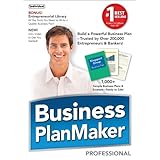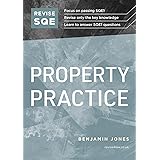Have you ever dreamed of building significant wealth, perhaps even reaching millionaire status, through smart investments? For many, real estate stands out as a powerful path to financial independence. It’s a journey that can seem daunting, especially with fluctuating market conditions and the constant chatter about “bubbles” or “crashes.” Yet, as our accompanying video from Graham Stephan demonstrates, a clear, patient, and strategic approach can lead to remarkable success in property investment.
Graham, a seasoned real estate agent and investor, shares his personal journey and the core principles behind his **real estate investing strategy**, which has led him to own over $4 million worth of property. He emphasizes consistency, long-term vision, and a keen eye for value. This article dives deeper into his insights, offering a roadmap for anyone looking to navigate the property market and secure their financial future.
Why Real Estate Remains a Top Investment Choice
Graham outlines five compelling reasons why he continuously invests almost all his income back into real estate. These aren’t just personal preferences; they are foundational pillars of successful property investment.
1. Access to Cheap Capital: Leverage Your Way to Growth
One of the most attractive aspects of real estate is the ability to borrow “cheap money.” By securing fixed 30-year loans at interest rates often just above inflation, investors can control a significant asset with a relatively small upfront investment. This concept, known as leverage, means you’re using borrowed money to increase the potential return on your own capital. For instance, if you put down 20% on a property and its value appreciates by 5%, your return on *your invested cash* can be much higher than 5% due to the magic of leverage. It’s a powerful tool when used wisely, allowing your money to work harder for you.
2. Enhanced Return on Investment (ROI)
Leverage directly contributes to a higher ROI. Instead of putting down 100% of the property’s cost, using a mortgage allows you to spread your capital across multiple investments or retain liquidity. When property values rise, that appreciation applies to the entire value of the asset, not just your down payment, amplifying your gains. This enables you to grow your portfolio much faster than if you only bought properties outright with cash.
3. Consistent Cash Flow Generation
Rental properties offer a consistent stream of income after expenses like mortgage payments, taxes, and maintenance. This “cash flow” can cover the property’s costs, pay down the mortgage, and even provide extra income for other investments or personal use. Many investors aim for properties with strong cash flow to build passive income streams, which is a cornerstone of financial freedom.
4. Significant Tax Advantages
Real estate investing comes with an array of tax benefits. These can include deductions for mortgage interest, property taxes, operating expenses, depreciation, and even some capital gains exclusions. Graham specifically mentions the impact of the SALT (State and Local Tax) deduction and the limitation on mortgage interest write-offs for primary residences (up to the first $750,000). Understanding these rules is crucial, as they can significantly improve your net returns and overall profitability.
5. Long-Term Appreciation of Property Values
Historically, real estate tends to appreciate over the long term. While there are short-term fluctuations, properties often increase in value due to inflation, population growth, and increasing demand for housing. Graham believes in this long-term upward trend, emphasizing that holding properties for decades allows investors to ride out market dips and benefit from substantial wealth growth.
Navigating Today’s Real Estate Market: Los Angeles Insights
Graham, having worked as a full-time real estate agent in Los Angeles since 2008 and investing since 2011, offers a unique, real-time perspective on market shifts. He observes a clear dichotomy in the current LA market:
- Luxury Market (above $2.5 million): These properties are taking significantly longer to sell. There’s more inventory, fewer buyers, and those buyers are highly selective.
- Entry-Level Price Points: A fierce bidding war environment. Buyers are often willing to pay significantly over asking, driven by intense demand and limited inventory. This competitiveness makes finding a good deal challenging, especially for investors like Graham looking for properties under $1.8 million.
This trend is partly influenced by the current tax landscape, where the limits on SALT deductions and mortgage interest write-offs make lower-priced properties more attractive to a wider pool of buyers seeking to maximize their tax advantages. This creates a challenging environment for value investors but also highlights specific areas of opportunity.
Addressing Market Uncertainty: The Long-Term Investor’s Mindset
It’s natural to feel apprehensive about investing during volatile times. Graham acknowledges the uncertainty but firmly believes in a long-term strategy, refusing to “sit on the sidelines and wait” out of fear. His reasoning is grounded in several key observations:
- No One Can Predict the Future: Short-term market predictions are often wrong. Graham himself made a prediction about interest rates that didn’t pan out as expected, highlighting the unpredictability of market forces.
- Highly Qualified Buyers: Unlike the 2006-2007 era, today’s buyers are generally well-qualified. They have hefty down payments, excellent credit, verifiable income, and often equity in their current homes. Most are owner-users with fixed-rate mortgages, making them less likely to sell during a downturn and more capable of weathering fluctuations.
- Market Support from Cash Buyers: Many wealthy individuals are holding cash, waiting for a market correction. If prices drop, this latent demand could quickly step in, providing a floor for the market.
For Graham, the short-term value of a property is less important than its long-term rental income and what it will be worth 30 years down the line. This patient, long-term perspective allows him to look past temporary dips and focus on the fundamental value and income generation of his investments.
The Art of Finding Value: Securing the Best Deals
Even with a long-term mindset, getting a good deal upfront is crucial. It protects you in a downturn, creating a “break-even” worst-case scenario. Here’s how Graham approaches this:
- Buying Below Market Value: Graham actively seeks properties that are under-marketed or where sellers are highly motivated for a quick close. Imagine a property listed for $1.7 million that needs work or is poorly presented. If he can secure it for $1.35 million, that 20% discount provides a significant buffer against potential market drops.
- Adding Value Through Renovations: Another strategy is to buy a property below market value, invest in renovations, and increase its overall worth. If you buy a home for $1.5 million, spend $200,000 on improvements, and its market value becomes $2 million, you’ve already built in significant equity. Even if the market declines by 15%, you might still break even or come out ahead. This approach directly increases the property’s intrinsic value and desirability.
The goal is always to find value: properties in appreciating areas, with potential for added value through improvements, and strong rental demand. This combination ensures long-term profitability, irrespective of short-term market noise.
Patience and Persistence: Your Most Powerful Tools
Graham’s experience highlights the sheer dedication required to find exceptional deals. He spent several hours a day for two months, sifting through hundreds of properties within a six-mile radius of mid-Los Angeles. Out of all these, he found only two worth making an offer on, and neither worked out. This isn’t discouraging; it’s a realistic testament to the effort and patience needed.
It’s essential to avoid emotional purchases or succumbing to “fear of missing out” (FOMO). Graham firmly believes that “there’s always another deal to be had.” If a property is overpriced, doesn’t meet your value criteria, or pushes you beyond your limits, it’s okay to walk away. Another, potentially better, opportunity will eventually surface if you have the patience to wait.
Two Proven Strategies for Unearthing Opportunities
To find those elusive deals, Graham employs two primary tactics:
1. Spotting Mis-Marketed Listings Early
Some of the best deals come from properties that are poorly marketed online. Think wrong square footage, terrible photos (even a picture of a screenshot!), or incorrect bedroom/bathroom counts. These listings often hide gems because the seller or agent might not fully understand the property’s true value, leading to an under-market price. The key is to be vigilant and act fast. Graham secured his first duplex 15% below its value within 24 hours of it hitting the market because he was the first to see and offer on a horribly marketed listing. This kind of deal requires constant monitoring and quick decision-making.
2. Capitalizing on Stale Listings
Another powerful strategy involves targeting properties that have been on the market for an extended period. These “stale” listings often started with an inflated price, or they had marketing issues (bad photos, incorrect details) that initially turned buyers away. As weeks turn into months, sellers often reduce the price. By the time the price becomes genuinely attractive, many buyers overlook it, assuming “if it was a good deal, someone else would have bought it.”
This is where opportunity knocks. Savvy buyers can approach these listings, often with bad pictures or a history of price reductions, and negotiate an even lower price for a quick close. The seller, having lost momentum and patience, is often more willing to make a deal. It becomes a numbers game, requiring you to know your limits, understand the property’s potential value, and then patiently negotiate for the best terms.
The Power of Negotiation and Buyer Leverage
When you’re dealing with a stale listing, or one where you’re the only interested party, you hold significant leverage. Don’t be afraid to negotiate every aspect: price, closing costs, repair credits, and closing timelines. A quick close can be a powerful incentive for sellers who just want to move on. Knowing the market value, the property’s upside, and your own financial limits empowers you to make strong, confident offers that protect your investment and build towards your long-term **real estate investing strategy**.









